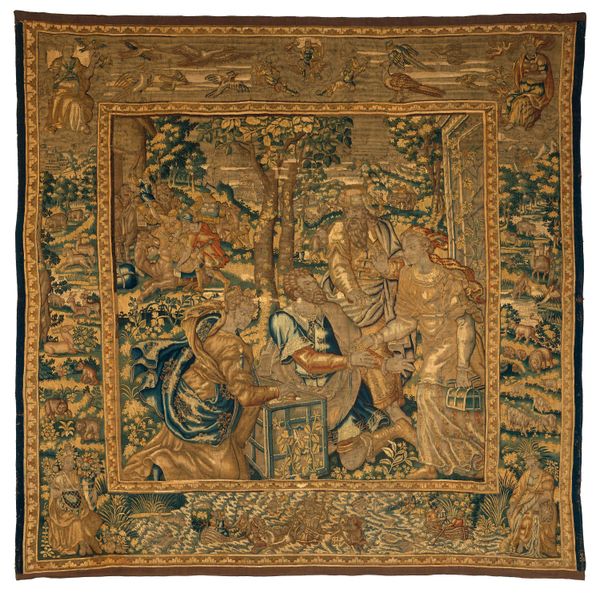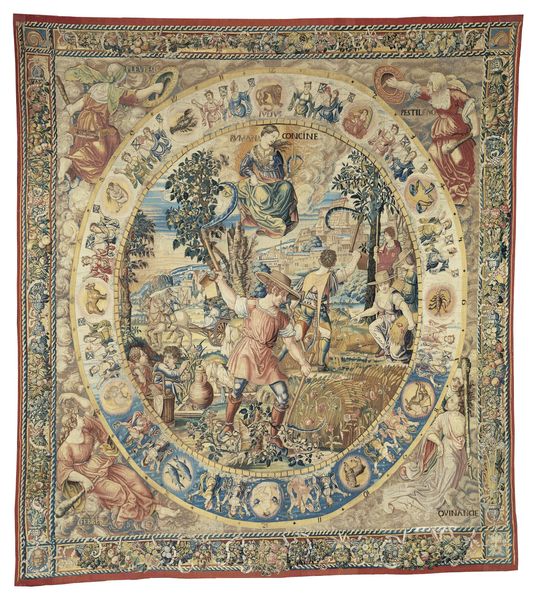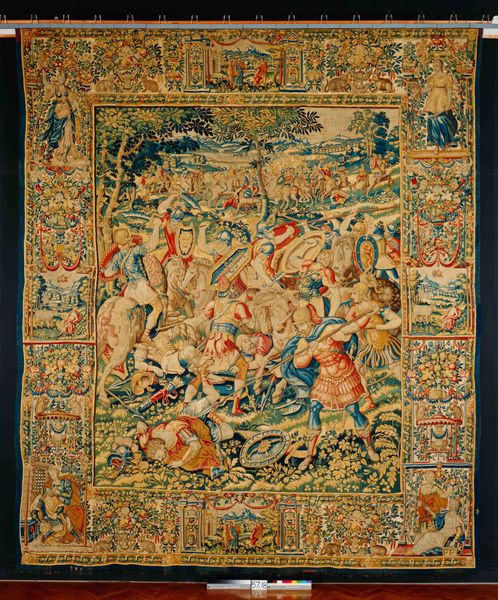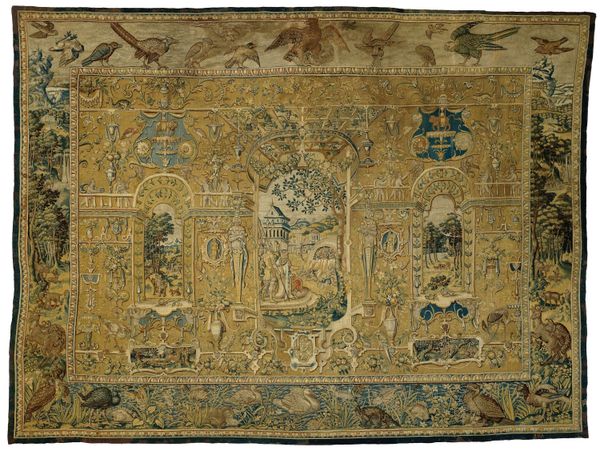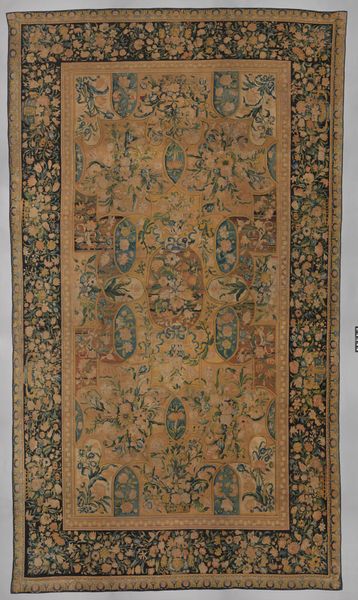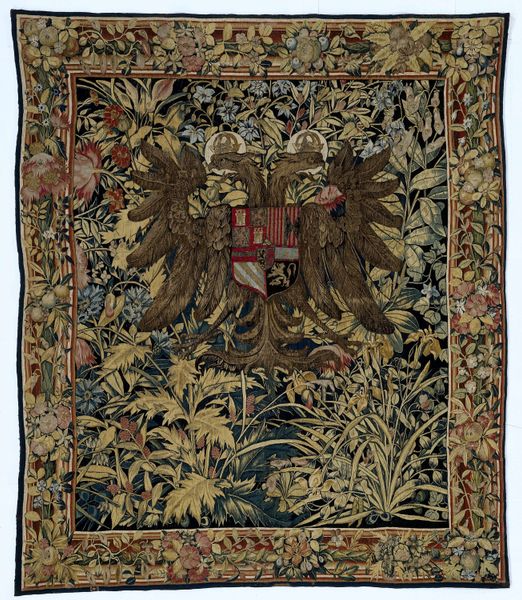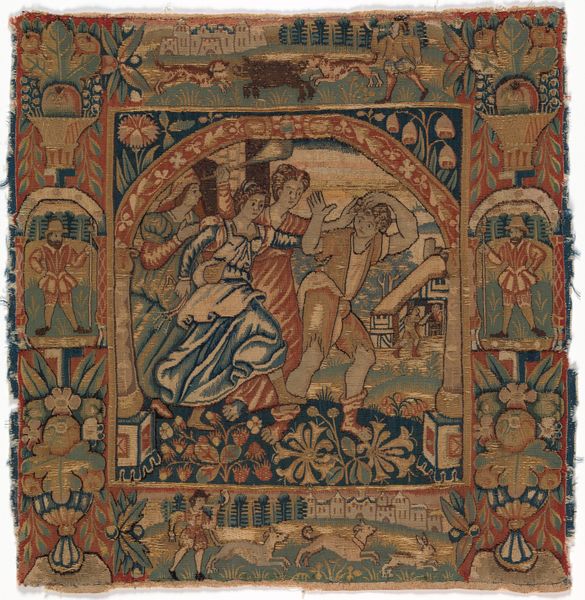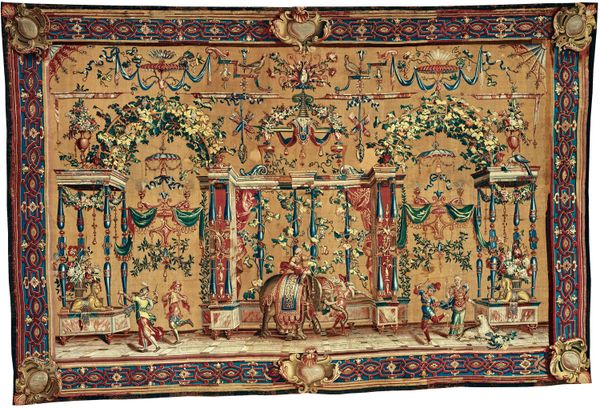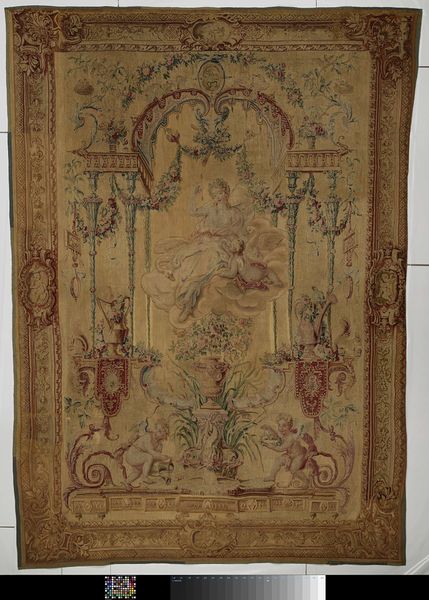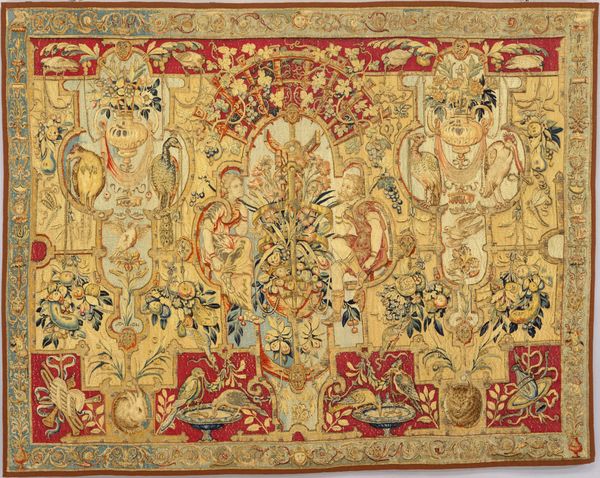
textile
#
medieval
#
water colours
#
narrative-art
#
textile
#
figuration
#
handmade artwork painting
#
oil painting
#
tile art
#
genre-painting
#
watercolor
Dimensions: height 305.0 cm, width 272.0 cm
Copyright: Rijks Museum: Open Domain
Editor: This is a striking tapestry from around 1575-1600, titled "The Arrival of Eliezer at the Well," made by an unknown artist. It feels incredibly dense and full of symbolism, but a little overwhelming at first glance. How do you interpret this work? Curator: Well, the sheer density itself is telling, isn't it? Consider the role tapestries played during this period. They weren't merely decorative; they were powerful indicators of wealth and status. What do you notice about the narrative itself? Editor: It seems like a very specific scene, with the man kneeling and the women gathered near the well. It almost feels like a stage production. Curator: Precisely. Think of this image as a memory palace, rich with cultural and religious symbolism. Eliezer's arrival at the well is a key moment from the Book of Genesis: He's seeking a wife for Isaac. What might the well itself symbolize, particularly within that cultural context? Editor: A source of life, obviously...and maybe also, as the meeting point, a place of destiny or connection? Curator: Exactly. The well becomes a locus, a concentrated point for divine providence. Notice how the artist presents this biblical scene through a distinctly Northern Renaissance lens – the figures' attire, the lush landscape... these details would resonate deeply with the contemporary audience. This visual translation reflects how cultural narratives intertwine across time. It creates continuity. Editor: That's fascinating! I never thought about tapestries carrying so much layered meaning, far beyond just depicting a scene. Curator: It reminds us that images hold encoded stories, awaiting our attentive decoding. And it encourages looking into cultural memories. Editor: So true. Thanks to this reading of symbols, I see so much more.
Comments
No comments
Be the first to comment and join the conversation on the ultimate creative platform.
